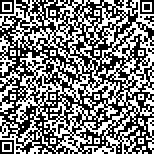张绍华,王玉龙,章春霞,等.头针联合下肢智能反馈训练对脑卒中后下肢痉挛性瘫痪的影响[J].中华物理医学与康复杂志,2021,43(9):787-792
扫码阅读全文

|
| 头针联合下肢智能反馈训练对脑卒中后下肢痉挛性瘫痪的影响 |
|
| |
| DOI:10.3760/cma.j.issn.0254-1424.2021.09.004 |
| 中文关键词: 头针 下肢智能反馈 脑卒中 下肢肌痉挛 临床随机对照研究 |
| 英文关键词: Scalp acupuncture Lower extremities Feedback Stroke Spasm Clinical rando-mized and controlled studies |
| 基金项目:广东省医学科研基金项目(A2020448) |
|
| 摘要点击次数: 6601 |
| 全文下载次数: 5917 |
| 中文摘要: |
| 目的 观察头针联合下肢智能反馈训练对脑卒中后下肢痉挛性瘫痪患者肌张力、运动能力、足底压力分布、关节活动度的影响。 方法 选取脑卒中患者212例,利用随机数字表法随机分为联合组(n=70)、运动组(n=70)、头针组(n=72)。3组患者均接受神经内科常规药物和康复训练,其中康复训练包括良肢位摆放、体位转移训练、平衡训练、步态训练等,运动康复训练每日1次,每次训练120 min,每周训练6 d,连续训练8周。头针组患者在神经内科常规药物和康复训练的基础上增加头针治疗,运动组患者则增加下肢智能反馈训练,而联合组在增加头针治疗的同时进行下肢智能反馈训练,联合治疗每日1次,每次共40 min,每周治疗6 d,连续治疗8周。于治疗前和治疗8周后(治疗后)采用改良的Ashworth评分(MAS)、改良的Berg量表(BBS)、Fugl-Meyer下肢运动功能量表(FMA-LE)量表和改良的Barthel评分(MBI)分别评估3组患者的下肢肌张力、平衡功能、下肢运动功能和日常生活活动能力,并采用步态功能评价系统检测患者患侧的足底压力分布和步行时各下肢关节的活动角度。 结果 治疗后,3组患者的MAS、BBS、FMA-LE、MBI评分与组内治疗前比较,差异均有统计学意义(P<0.05),且联合组治疗后的MAS、BBS、FMA-LE、MBI评分分别为(1.41±0.60)分、(46.13±8.95)分、(29.10±3.24)分和(55.76±11.18)分,均显著优于运动组和头针组治疗后,差异均有统计学意义(P<0.05)。治疗后,3组患者患侧第Ⅰ趾、第Ⅱ~Ⅴ趾、跖骨头Ⅰ、跖骨头Ⅱ~Ⅲ、跖骨头Ⅳ~Ⅴ、内侧足弓、外侧足弓、内侧足跟、外侧足跟的承重负荷比与组内治疗前比较均显著改善,差异均有统计学意义(P<0.05),且联合组治疗后患侧的上述各足底压力分布承重负荷比均优于运动组和头针组治疗后,差异均有统计学意义(P<0.05)。治疗后,3组患者骨盆旋转角度、髋关节屈曲角度、膝关节屈曲角度、踝关节背屈角度较组内治疗前均显著改善,差异均有统计学意义(P<0.05),且联合组治疗后上述各活动角度均显著优于运动组和头针组治疗后,差异均有统计学意义(P<0.05)。 结论 头针联合下肢智能反馈训练可显著降低脑卒中后下肢痉挛患者的下肢肌张力,提高其平衡能力、下肢运动功能和日常生活活动能力,并改善脑卒中患者足底压力分布和下肢的关节活动度。 |
| 英文摘要: |
| Objective To observe the effect of combining scalp acupuncture with feedback training on muscle tone, motor ability, plantar pressure distribution and joint range of motion of stroke survivors with lower limb spastic paralysis. Methods A total of 212 stroke survivors were randomly divided into a combination group (n=70), an exercise group (n=70) and a scalp acupuncture group (n=72) according to a random number table. All of the patients received routine medication and 120 minutes of rehabilitation training six days a week for 8 consecutive weeks. The rehabilitation training included guidance on good posture, posture change training, balance training and gait training. The scalp acupuncture and exercise groups were additionally provided with 40 minutes of scalp acupuncture and lower limb intelligent feedback training, while the combination group was given both. Muscle tension, balance and lower extremity movement were quantified before and after the training, and a gait evaluation system was used to detect the plantar pressure distribution on the affected side and the range of motion range of the lower limb joints during walking. Results After the treatment, significant differences were observed in the average modified Ashworth scores, modified Berg scale scores, Fugl-Meyer lower extremity ratings and modified Barthel Index scores compared with before the treatment. The average scores of the combination group were then significantly better than those of the other two groups. The average load bearing ratios of the affected toes, metatarsal bones Ⅰ-V, medial arch, external arch, medial heel and external heel had improved significantly in all of the groups, with the improvement of the combination group again significantly greater than those of the other groups. The same pattern of improvement was observed in the groups′ average pelvic rotation angles, hip flexion angles, knee flexion angles and ankle dorsiflexion angles. Conclusion Combining scalp acupuncture with intelligent feedback can significantly improve lower extremity functioning after a stroke. That should improve performance in the activities of daily living of stroke survivors. |
|
查看全文
查看/发表评论 下载PDF阅读器 |
| 关闭 |
|
|
|